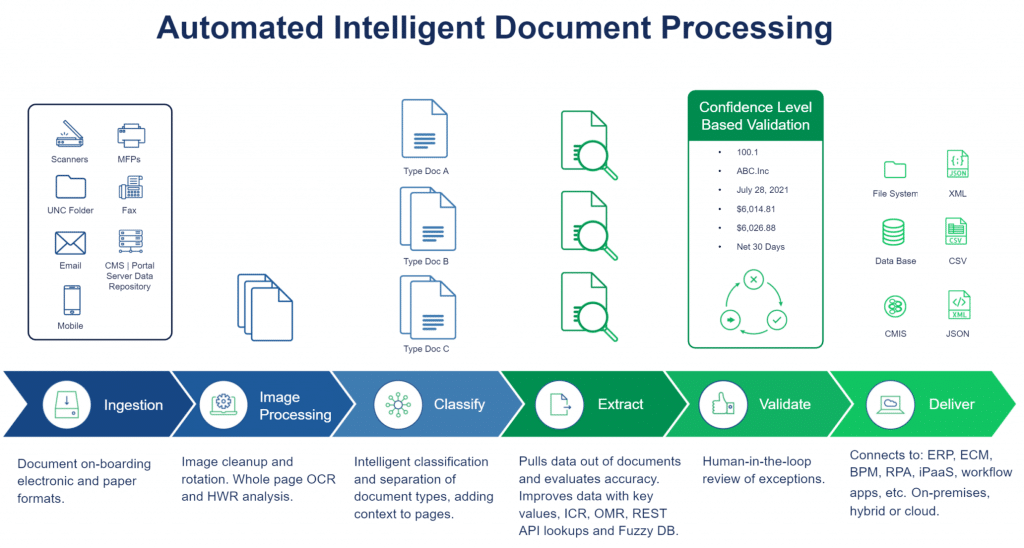How AI Is Revolutionizing Document Management in 2025

What’s the most expensive mistake you’ve ever made?
If you didn’t measure your answer in hundreds of millions of dollars, you’re doing better than the Japanese company J-Com. When they mistakenly listed 610,000 shares of their stock for 1 yen apiece (less than a single US cent) instead of listing their stock for 610,000 yen each (over $4,000), the mistake cost them a whopping $225 million.
Years before that, a single missing hyphen led to the misdirection and self-destruction of the Mariner I space probe, costing the equivalent of $169 million in today’s dollars.
Mistakes as simple as a value typed in the wrong field or a single missing character of text can cost hundreds of millions of dollars, but most of the expenses businesses incur aren’t the major catastrophes printed in the paper. They’re small day-to-day errors. The aggregate of all of these small documentation errors costs businesses over $3 trillion ($3,000,000,000,000) every year.
While AI doesn’t replace human labor, it does mitigate the human errors that human labor comes with. Document management is essential to today’s business environment, and AI is revolutionizing the document management landscape in 2022 and beyond.
Key Takeaways:
- AI has the power to turn document management software on its head.
- Humans are good at recognizing patterns, but AI is better at making insights from large sets of data.
- FileCenter helps users harness the power of AI in their document management software.
AI Document Management Processing
Document processing is the process of converting analog documents into digital formats. Document processing is essential to the broader document management process because it makes documents machine-readable, allows users to reorganize and edit them, and, importantly, allows users to store and access them digitally.
Document processing contains several different processes that range from scanning documents to uploading them to the cloud. Some of these processes require human intervention, but AI can improve many of these processes.

Optical Character Recognition
OCR is one of the most important aspects of document management software because it allows computers to “read” documents, which enables the rest of the AI tools in this guide.
OCR (or Optical Character Recognition) is an emergent technology that scans documents and compares light and dark pixel patterns to guess which letters correspond. Some OCR programs can also read fonts. However, font recognition also opens the door to new problems for OCR as it can result in inconsistent typefaces and font sizes. Because of the overwhelming similarities between popular fonts, even advanced OCR can mistake individual letters in one typeface for letters in another typeface (potentially even at a different size).
Because of the complication of multiple fonts and sizes, it is more efficient to use OCR to convert words to a set typeface rather than producing documents with scrambled typefaces.
As AI grows smarter and more advanced, it can provide more sophisticated OCR readings and use Natural Language Processing (NLP) to make educated guesses about the intended meanings of words, common transposition errors, and even typos in the original document. OCR is the engine driving document management software forward, and AI is the fuel that powers it.
Form Recognition and Data Extraction
OCR is an important first step in document processing, but the next step requires putting the machine-readable text to use.
Once your document management software converts your analog documents into digital text, form recognition allows your system to create pairs of data that are useful and actionable for you. It does this by using AI to identify components of a form, using OCR to read the document’s contents, and marrying the two by pairing the input with the ID of the area of the form it maps to.
A common use case of form recognition is receipt scanning: a user scans a receipt into their document management software, OCR converts the analog words into machine-readable text, and form recognition AI matches data values with the area on the receipt they correspond to, and it outputs data pairs such as “Office Supplies; $37” and “Vendor; Office Depot.” This automatic extraction is essential to an optimized digital documentation process.
Document Enhancement
Metadata, simply put, is data about data. For example, an invoice contains data about a purchase, but metadata about an invoice could include data like when you received it in the mail, what format it’s in, who created the invoice, etc.
Metadata is important because it allows businesses to aggregate data based on common attributes, gain insights about the creation and use of documents and filter them based on metadata.
Some metadata is based on technical aspects of the documents, like the file format or creation date, while users can add other metadata such as comments and category tags. Still more metadata is based on AI that uses machine learning to interpret documents based on their contents and context.
There are four main categories of metadata: technical, operational, business, and social. While AI isn’t foolproof—some human oversight is still helpful in curating metadata—AI has made huge leaps forward in language processing and machine learning in recent years.

Document Clustering
Collecting documents is one thing. Gathering insights based on those documents is another. While human brains are excellent at recognizing patterns, they are not good at comprehending large sets of data—something AI excels at.
Document clustering is collecting documents into groups based on shared attributes. This allows human users to gain insights based on the trends within large amounts of documentation.
Clustering is a complicated technical process that involves several AI-enabled components. Tokenization is the process of analyzing documents based on smaller components (words or phrases) which can then be analyzed using stemming and lemmatization to construct the meaning of the words based on their context and root words. This process helps users access insights that would take months or years to analyze with a manual process.
FileCenter Document Management Software
Overwhelmed by the possibilities of AI in your document management? Not sure where to start? FileCenter is here to help.
FileCenter is powerful document management software that allows users to edit PDFs, convert file formats, securely share encrypted documents, and much more.
If you’re ready to revolutionize your document management with AI and full-featured tools, download a free trial or schedule a demo of FileCenter today.


